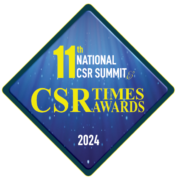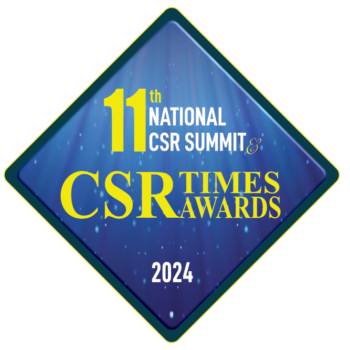CSR OPINION
Corporate Social Responsibility Integration: The Good, Bad & Bold
CSR and sustainability have developed into practices rather than trends. Willingly or forcefully, companies embark in sustainability reporting before strategically integrating CSR at operational levels. Realistically, there is a long way to go to ensure responsible practices assimilation within corporate management systems, especially in the case of a top-down regulatory imposition.
By Ilaria Gualtieri
Corporate Social Responsibility (CSR) and sustainable practices are considered strategical to the survival of corporations. However, let’s not forget that CSR was historically driven by stakeholders’ requirements, compliance with international trends and reputational gains. CSR and sustainability have developed into practices rather than trends. While GRI in 2017 stores 41,558 sustainability reports from 10,805 organisations, Carrot & Sticks notes a 45 per cent surge in the countries applying sustainability frameworks, and a 113 per cent growth in global sustainability instruments from 2013 to 2016. The average rate of sustainability reporting among major businesses in Europe and Americas remains over 70 per cent, and, notwithstanding a 10 per cent in the Middle East, the Asia-Pacific block displays a promising +30 per cent in the period 2011-2016. These data goes beyond a mere compliance approach, denoting that CSR as a business practice has unveiled its potential to act as a profound lever for strategic organisational change.
The Good: reporting as a gateway to change
Firstly, let’s not forget the main driver of any economic unit: profit generation. Putting aside enterprises born with a radically different standpoint, the aim of businesses’ is to generate revenue, endeavour growth and success. The 2017 Future Trends in Sustainability Reporting by GRI and Sustainability notes that companies experience greater pressure from stakeholders: they are expected to be part of the solution on issues like climate change and human rights, required to disclose and comply with targets, and improve and integrate their data collection processes. At the same time, this triggers changes in the macro-environment, with voluntary corporate efforts topped by mandatory disclosure requirements introduced through regulations by governments, stock-exchange and financial authorities (C&S, 2016).
Thus, as demand for transparency increases along with the voluntary adhesion of the businesses, governments recognise the importance of corporate accountability. Overall, however, the reality of CSR integration is through a gradual assimilation of principles and practices within the constraints of market, stakeholders, regulators and daily work. From an initial cosmetic or philanthropic approach, companies slowly embed the CSR language; adhere to international frameworks and reporting requirements, appointing CSR officers who slowly develop into teams increasingly closer to the C-suite, creating cross-functional synergies, embedding lessons learned and continuously improving performance.
From being seen as an add-on or cosmetic touch, progressively, CSR has become tactical when making strategic corporate decisions: today, it would be unthinkable for companies to enter the market without approaching CSR and sustainability. Sustainability has evolved from add-on to standard. Products safety, employee welfare, resources efficiency, transparency and accountability are basic requirements. Millennium Development Goals (MDG), climate change, customers’ attention, saving costs, market expansion, international voluntary and national mandatory reporting frameworks pressure companies to develop more comprehensive reporting and focused sustainability strategies. However, let’s investigate the actual dynamics of CSR integration within firms.
The Bad: CSR as a top-down strategy
Within CSR, companies gradually adapt to the environment. Although ‘strategic’ voluntariness would be ideal, the practice substantiates a widespread ‘compliance approach’. Companies usually ‘make sense’ of stakeholders pressures by providing evidences of responsible behaviour through reporting, training, certifications and public relations (PR). The development of a CSR or sustainability report is often the first action carried out upon implementing a CSR structure and policy. In other words, corporations feel or are imposed the need to provide stakeholders with proof of their commitments through reporting, managing potential risks, and demonstrating compliance with international/ national standards and certifications. Within the ‘top-down’ integration approach, management either understands the importance of “being seen responsible” by stakeholders– and/or –responds to regulatory pressure by introducing CSR into corporate practices and language.
This phase is normally characterised by a lack of awareness on what CSR is, which business functions contribute to corporate performance, partial or limited input from managers in the decision/ implementation process, territorialism, and by the burden of establishing internal processes and training employees. The analysis of the Corporate Act outcomes over the past three years clearly reveal that most companies tend to comply, but are not yet able to step further. The local adaptation process requires an evolutionary pattern that goes from awareness-raising to involvement, from a top-down to a bottom-up flow. In the real world, this process requires years to settle and thrive, and is enhanced by the support of appropriate external consultants and agencies that can help raising awareness and guiding performance measurement, reporting and the strategy-identification process.
The real escalation of corporate CSR efforts occur bottom-up. From one hand, the CSR discipline is introduced by its end-tool, reporting; from the other, reporting triggers awareness, synergies, processes, the establishment of KPIs or measurement, and importantly internal verification. Reporting implies improvement and growth per se. However, reporting shall be crowned by a system able to monitor, measure, compare and validate results. Once appropriately established, the reporting structure and process slowly takes over the value-chain, until it is applied and appreciated as a lever that mitigates risks, enhances reputation, contributing to the business at large. This way reporting delivers business results: aligning a company’s socio-environmental performance with governance, business, purpose and values.
Once the integration has occurred, an invaluable contribution is the introduction of external assurance. This not only endorses the transparency, materiality and accountability principles of the reporting process, but also further stimulates continuous improvement and ‘shared value’. The end of this phase usually corresponds to an achieved maturity that enables companies to establish appropriate strategies and roadmaps that merge corporate strengths with stakeholders needs, focusing on areas where they can actually create shared value. In fact, the second stage of CSR integration focuses on mature subjects such as materiality, innovation, research and development, risk management, resource efficiency, extending the sustainability lesson learned across the value-chain. Within a mature integration stage, organisations recognise their impacts, measure their performance, coming up with innovative ways to create and enhance their strategies. The focus becomes uniqueness, a market distinction that elicits tailor-made approaches to tackle global and local issues (Avlonas, 2017).
The bold: what gets measured gets treasured
Sustainability reporting thus institutes a positive cycle: consistent reporting implies creating measurement systems and verification, by nature aimed at continuous improvement. Within the reporting structure, employees buyingin and involvement increases learning and integration, which in turn creates pressure on management to further enhance performance. Thus, reporting gets increasingly formalised and normalised across business areas: awareness triggers enhanced communication with/between management, boosting engagement. The moral of the story is that what gets measured gets treasured: KPIs are born to be met, exceeded, transformed in line with the system’s maturity and performance, adapted to internal and external pressures. Mature companies consider impacts on stakeholders, the consequences for the business, and are able to connect internal expertise and develop realistic and strategic frameworks. While individuals and functional areas are dedicated to reporting and managing the sustainability strategic corporate approach, materiality reflects executives buying-in and the establishment of CSR processes; a flipped perspective where engagement occur bottom-up.
Mature corporations manage reporting in-house, with the guarantee and overall driver of external assurance to control, verify and consolidate the process. The bold of CSR integration is thus practitioners’ ability to use reporting as a tool to introduce, embed, and boost CSR performance measurement and processes, taking conscious advantage of its evolutionary pattern. The use of external agencies to develop projects is not indicative: companies do not have the capacity to manage their initiatives, but shall refrain from “handing over” responsibility and rather treat each project as a business, ensuring it delivers the promised results of target stakeholders and to the company itself. A mature company is aware of its impacts and has established a governance structure and awareness that allows identifying and pursuing a strategy with set KPIs. With or without the support of external parties, it shall identify the results to be obtained and put processes in place to monitor and measure results.
Ideally, the top-down integration occurs as displayed in the table: response to external pressures generates an integrated learning process that develops into a strategic approach. However, there is a long way to go. Willingly or forcefully, companies embark in sustainability reporting before strategically integrating CSR at operational levels. Realistically, there is a long way to go to ensure responsible practices assimilation within corporate management systems, especially in the case of a top-down regulatory imposition. The Companies’ Act 2013 is a brave move to ensure establishing a “CSR mindset” within corporation. However, the law shall put in place a system to monitor, measure and assess corporate performance whilst eliciting a growth pattern that can actually create shared value. Corporations indeed have a large role to play in shaping the future of India, and I firmly believe in their disposition and capacity to enact systems and projects that will bring value to their stakeholders, whilst generating pride within their organisations.
However, the dangers of a rushed approach shall be mitigated by awareness, and an adaption to existing international frameworks in parallel to national requirements. This can surely benefit the CSR integration process, whilst supporting scaling up the overall business sector approach.
The writer is a Corporate Social Responsibility (CSR) and Communication Consultant specialised in the Middle East and Gulf region.








































